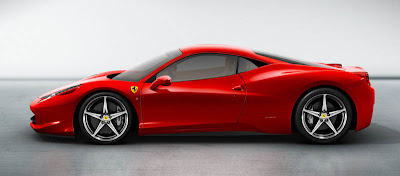Ferrari P540 Superfast Aperta, 2011
The first shake-down has been held at Fiorano of a very special one-off, the Ferrari P540 Superfast Aperta, built for an American client. The second in a new Special Projects programme created by Ferrari to meet requests from the most discerning clients and collectors to create truly unique models, is based on the Ferrari 599 GTB Fiorano and was inspired by a Carrozzeria Fantuzzi-designed Ferrari built specifically for the 1968 Fellini film, Toby Dammit, itself inspired by one of the tales of Edgar Allan Poe.
The Special Project's approach to producing such individual one-offs, the Ferrari P540 Superfast Aperta respects all existing international safety and homologation requirements and is thus road legal. The car was designed by Pininfarina and built in Maranello, and the client was directly involved in each stage of its development. The 599 GTB Fiorano donor car is a coupé, considerable effort went into strengthening the chassis by using finite element analysis in development and the increase in weight was kept down to just 20 kg by employing carbon-fibre extensively. From the initial sketches to the final, road-legal car took just 14 months.
Technical specifications :
= Length: 4731 mm
= Width: 1954 mm
= Height: 1300 mm
= Wheelbase: 2750 mm
= Front track: 1690 mm
= Rear track: 1620 mm
= Engine
o Type: 65° V12
o Displacement: 5999 cc
o Maximum power: 456 kW (620 CV) at 7600 rpm
o Maximum torque: 608 Nm (62 kgm) at 5600 rpm
= Transmission: F1 6-speed gearbox
= Tyres
o Front: 245/35 20"
o Rear: 305/35 20"
= Fuel consumption
o Combined cycle: 17.9 l/100 km
o CO2 emissions: 415 g/km























